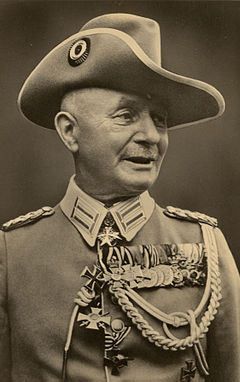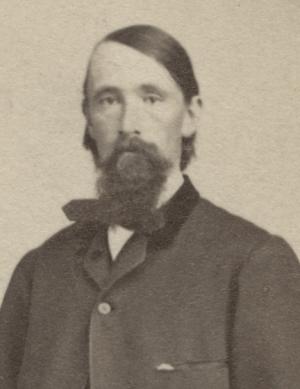(CONTINUATION)
Operational Characteristics of the Attacks with Elite Ground Forces.
Units and small units that attack with limited aims (a deep incursion, the temporal capture of a critical position, an ambush) constitute a military closed «system». This condition imposes specific characteristics on the “interfaces of action” with the enemy, which are sometimes different to those of great units, especially in the theme of available means and the time of action.
Attacks with limited aims have been operationally used along large fronts. Where the enemy’s defense lacked depth and enough reserves and was looking to minimize own wear and make use of the multiplier effect of the set’s efforts. This occurred with notable success when the forces of the 9th German infantry Army of General Model sought to reform and consolidate its fronts in the Sychevka’s southwest zone between January and April of 1942.
The definitive characteristic of his use, adapted in these tasks, is that is used with criterion unity, by a kept and «concentric» in the result of his impulses “operational gravity center”. So that the limited efforts do not vanish in reconnaissance in force actions, in not suitable or out of opportunity sectors. It is to say, usiing unduly.
The field of action is the secret for applying freedom of action. By extending or decreasing the field of action, or by changing the field of action on the enemy, one can keep or recover the necessary freedom of action to act favorably and not simply reacting to the enemy.
«Field of action» is any «spatial-temporary-circumstantial» situation that allows for the suitable employment of an Army’s means and capacities in accordance or as part of that army’s intention. The field of action is formed by one or several «interfaces of action«, which are the very small sectors where direct contact occurs between the small units of action of each rival. Examples are when a deployed platoon attacks an enemy section, when a tank attacks infantry heavy weapons, when a section attacks by firing on an enemy’s strong position, when an engineering section opens a path in a minefield, etc.
The task is to find an optimal way in which, through successive «periods of action» applied in «fields or interfaces of action», one can gain the relative freedom of action to act and to carry out «quantum» or elementary units of the general intention. In addition, a general action can be divided into numerous partial actions to achieve in stages, momentary or minor «periods of action»; acting this way in the same «field», divided in minor interfaces of action.
Interaction in stages and situations suitable to advance one’s military means guided by the superior intention or orders is the general mechanism for applying, recovering and maintaining freedom of action in one’s favor.
A characteristic of the freedom of action is that is interactive with the enemy in the «interface of action» and is played out in fields of action that chosen by or imposed on an army. Passiveness means that freedom of action is not taken advantage of through lack of initiative. Thus, freedom of action can also have a result opposite to its intention and this can happen regardless of the type of fight engaged in, whether it is offensive or defensive.
The units had to gain combat superiority over the enemy, since obtaining a local and temporary supremacy would allow them to achieve their aims.
Essential to the mission’s conception are intelligence and simplicity. Essential to its preparation are security and training. The characteristics of the mission in action are surprise, tempo and the commitment of all the mission participants.
Simplicity allows the force to concentrate on a few related aims, using a limited number of men and means in the military closed system. If new tactics or different technologies are used, both the simplicity of the mission’s conception and the surprise of its execution will be enhanced.
On September 12, 1943, the captain of the S. S. Otto Skorzeny carried out the rescue of the Duce from his prison in the high mountain hotel Great Sasso located in the Apennines. Gliders were used to assault the position, fighting against the difficult cold draughts (these produced a delay in the arrival, as they landed at midday) and scarce sites for landing. That such a difficult assault would be attempted, higly surprised the on duty «carabinieri». The attackers took advantage of this by gaining access to the principal building while. At the same time, an acquaintance general of the «carabinieri» friendly landed with Skorzeny. Combat supremacy was rapidly achieved.
Intelligence supposes complete, up-to-date and timely knowledge of the circumstances and characteristics of the mission. Here, with so limited employing means, intelligence is facilitated by different agencies and units that intervene with the mission, even those at the level of the state. Specially the CIA, the National Security Agency or NSA, the Central Security Service or CSS, that links with the NSA, and the FBI.
Security refers principally to the stages of planning, preparation, training and, if appropriate, stage of transport or insertion. It has active and passive aspects. Giving off misleading information and concealing the force’s real intentions up until the stage of action on the objective. Each person must only know what is necessary for his actuation.
Training must be generic for actions and tactics and specific for those actions required for the mission. Independently of this, training is necessary to achieve coordinated actions among units taking part simultaneously in some part of the mission. A general rehearsal of the mission is also necessary, including its planning duration and margins for mistakes. It is also good to include some variant that represents a mistake, an unforeseen event or a loss of combat or movement capacity. And that the men train in correcting them or, at least, in neutralizing them with his effort. For example, a part of the helicopters is knocked down or lands at major distance of the foreseen in the theoretical disembarkation zone.
The final «training area» must be similar in general characteristics to the «target area». And it must be placed at safe of detections and filtrations of information (security), which onlookers and interested persons can catch. The independent variable of «time» introduces sometimes unexpected and not always welcome effects. For example, a vehicle presents problems after a number of hours of hard use, that was not foreseen in tests of «at scale» time.
Surprise supposes attacking an enemy (even if arranged in prepared defense) at a point or flank that is neglected by him at the moment, giving the attacker a favorable «interface of action» on him. It must suppose a “tactical innovation”. Though it could also contain technical differential or new elements. Examples of such “innovations” in the past are hollow load bullets or charges and flame-throwers.
The surprise is the sufficient and necessary multiplier of the combat capacity of the «small incursion force». That will allow him to compensate the scanty military resources that it has on the area. To it joins his inconsiderate and carefully applied with rapidity employment. To provoke an overwhelming effect on the enemy, achieving the temporary local superiority. As being an «isolated military system», the incursion force of will receive neither reinforcements, nor supplies. For its part, the time is not neutral, here is an enemy: because there is not more operation time. From his depletion, the unit will confront the pursuit and his annihilation…
Speed consists in firmnessly acting, ahead of the enemy, in the successive elementary «cycles of action» that define a performance or process. It also presupposes acting with opportunities and with pace (adapted speed, relative to the enemy). Remember that an action cycle includes a phase of observation, a phase of determining the situation, the decision phase and the accomplishment phase. If one’s speed is greater than that of the enemy, his actions will be in response to situations that have already just passed.
Speed also implies rapidly reaching a situation of active supremacy in combat capacity. The enemy’s reaction speed is initially very slow as he is in a stupor, trying to verify what is happening. This means his phase of determining the situation will be lengthened. Deceptive action in these moments will lengthen the time that passes and fog the determination of the situation. Ways of doing this include utilizing some of the enemy’s uniforms, equipment or language by certain parts or subunits involved in the action. Once supremacy over the enemy is attained, it must always be kept. As scanty resources make its recovery very difficult. Once supremacy in combat capacity is reached, the probability of a mission’s success increases exponentially and the vulnerabilities of one’s forces are dramatically diminished.
The commitment of men and officers and their selection qualities, lend moral and physical courage to the actions they undertake. This is necessary to overcome uncertainty, stress, mistakes, diversions, enemy actions, and to take advantage of the always fleeting opportunities. Commitment supposes full knowledge of the mission and the full, voluntary and enthusiastic support of all participants.
Execution is carried out by establishing at the level of the regiment, battalion or company a center of gravity for the common effort, which harmonizes and consolidates the «missions» of its subunits.
THE END.
 GENERAL VATUTIN.
GENERAL VATUTIN. GENERAL POPOV.
GENERAL POPOV. THE SUPREME SOVIET COMMANDER.
THE SUPREME SOVIET COMMANDER. IN THE COVER OF «TIME» NEWSMAGAZINE…
IN THE COVER OF «TIME» NEWSMAGAZINE… THE GERMAN FIELDMARSCHAL’S COMMAND BATON.
THE GERMAN FIELDMARSCHAL’S COMMAND BATON. ISIS’ IRREGULARS TRAINING…
ISIS’ IRREGULARS TRAINING…
 GENERAL PAUL EMIL VON LETTOW-VORBECK.
GENERAL PAUL EMIL VON LETTOW-VORBECK. GRAND MASTER JEAN PARISOT DE LA VALLETTE, ORDER OF ST. JOHN, MALTA.
GRAND MASTER JEAN PARISOT DE LA VALLETTE, ORDER OF ST. JOHN, MALTA. GENERAL DANIEL MORGAN.
GENERAL DANIEL MORGAN. GENERAL HERMANN BALCK.
GENERAL HERMANN BALCK. JAN ZIZKA.
JAN ZIZKA. CHARLES FLANDREAU.
CHARLES FLANDREAU.